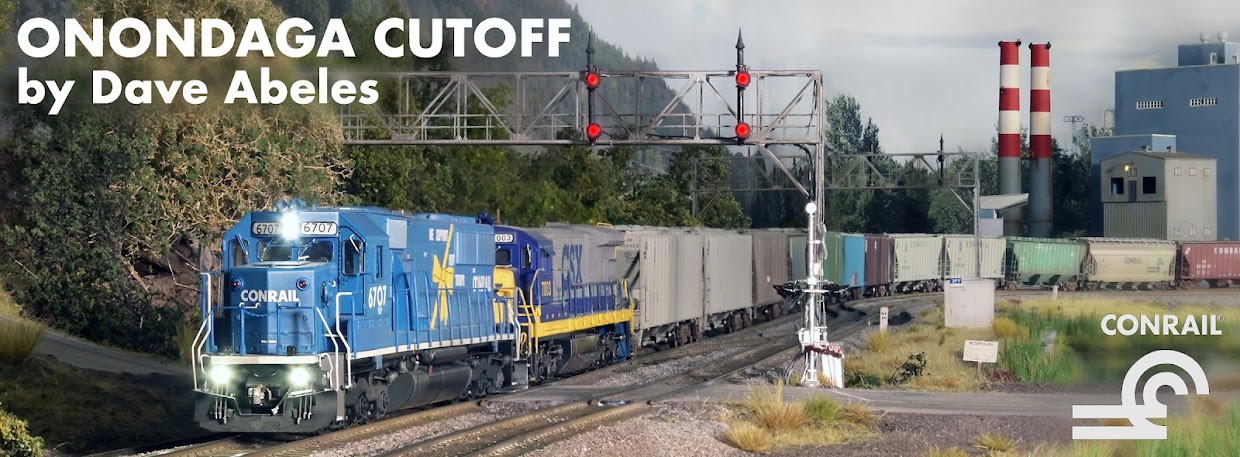It's no secret that the Minoa & Euclid, the shortline that interchanges with Conrail on the Onondaga Cutoff, is a branch that really tested this theory. Given the constraints in the basement, grades of up to 8% were needed for the route to avoid major physical obstructions around the oil tank. Would that function once built? Well, if I were to worry about grades being too steep to look or operate perfectly, this branch never would have been built.
We took a risk in building it, and lo and behold, a pair of locomotives could overcome the steep grades with the short trains that ran on the branch. But, it was only about a 25-foot run. My buddy Rick Smirnoff who was instrumental with the benchwork construction suggested to extend the plan around a nook in the foundation for the basement stairs, thus extending the run by 35 feet. Seeing the steepness work at one spot allowed me to move ahead with this one, and Smirnoff Hill was born!
That said, it's not pretty, and doesn't appear very prototypical. The next challenge is tricking the eye with scenery so that we don't focus on the grade as much.
This area had recieved some early experimental scenery that is not up to snuff with my latest efforts, so I am taking another look and will change most of it. I started with installing my standard cardboard webbing, noting how hills next to the track did a nice job of hiding the grades on other parts of the railroad. When other areas are steeper, the track appears more reasonably level.
After all that was in place, I cut a piece of 1/8"hardboard Masonite to fit the front of the benchwork as fascia, and used that to attach more webbing with hot glue. That can quickly be followed by plaster gauze for hardshell, and sculptamold as a final ground surface before paint. Lots more to come here, it will be a challenge to close this scene out with the workbench so close at hand.
Speaking of the workbench, it was well past time to clean it up. What a mess. I cleared the whole surface, and put things back as organized. Containers for parts and rags, glues, paints, etc now are separate trays rescued from the old toy bin. This way I can stack those next to the space, and therefore only put them on the surface when they are needed.
Progress, here and there!




No comments:
Post a Comment